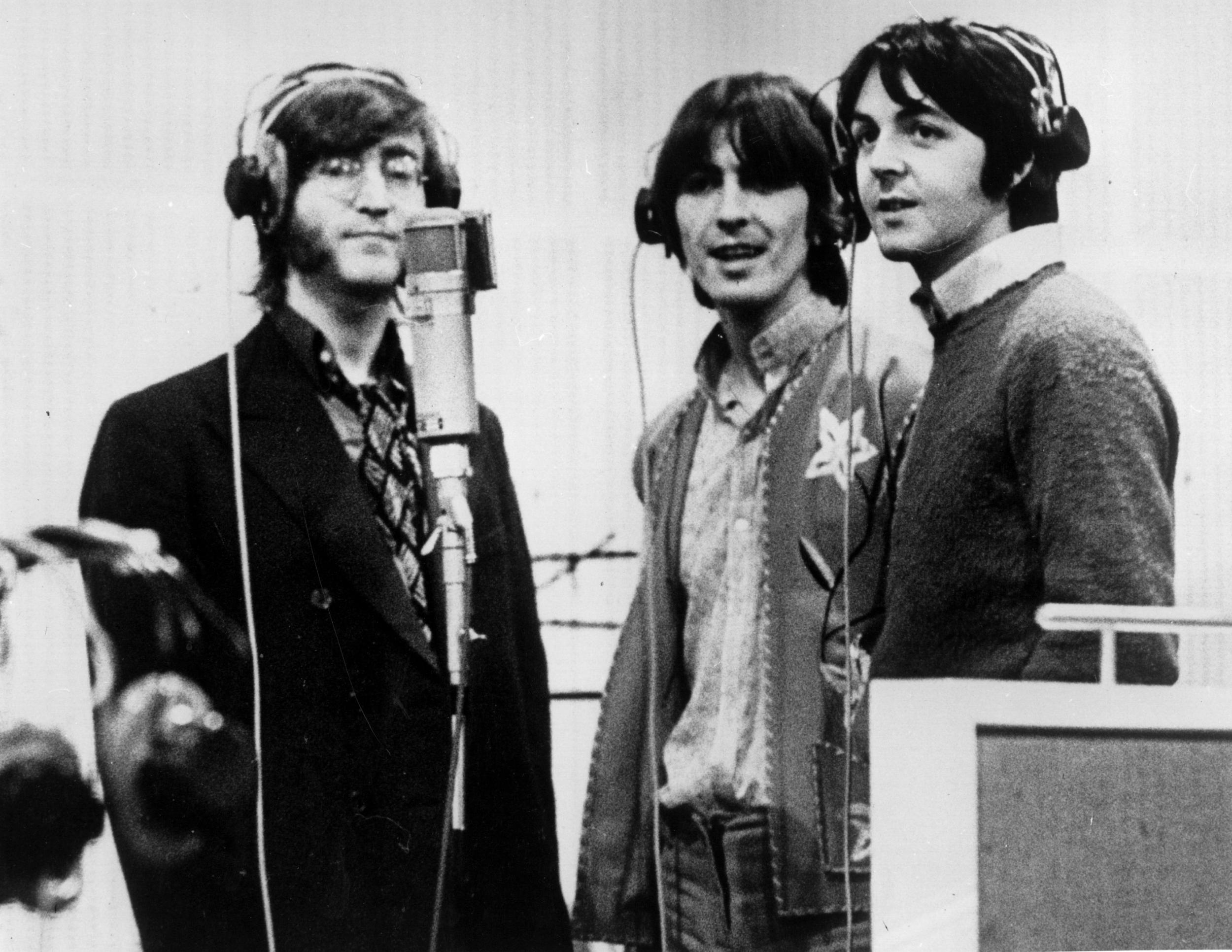The Beatles’ White Album at 50: Paul is dead, the Manson family murders and ‘granny music s***’
David Lister looks back at the groundbreaking 1968 album that saw John Lennon and Paul McCartney moving in different musical directions


One of the greatest and most innovative albums by the world’s most famous band is about to have its 50th anniversary. Yet a remarkably large number of people don’t even know its title. Best known, even by The Beatles themselves, as The White Album because of its all-white sleeve, it was actually called The Beatles, a fact forgotten almost as soon as it was released on 22 November 1968.
And the title is not the only thing that has been forgotten. Who, for example, would now remember or even believe that soon after the release thousands of Beatles fans across the world were carefully playing a snatch of between-tracks mumbling backwards (reversing the vinyl record by hand on their record players) to hear, or so they were convinced, the message “Paul is dead and I miss him, miss him, miss him”, gaining urgency in a slightly frightening crescendo? Who even remembers that there was a widely circulated rumour that McCartney had passed away and been replaced by someone who looked exactly the same and had the same singing, playing and songwriting talent? Beatle nuts were a gullible lot in those far-off days.
Much about the astonishing White Album adds new perspectives to the Beatles story. For a start, it should be categorised as one of the great breakup albums. The recording sessions from May to October of that year showed a band so out of love with each other that their late producer George Martin has said that he hated even talking about it, as it brought back such painful memories.
There was much to be in pain about. The happy-go-lucky, wisecracking moptops of just a few years earlier were a distant memory. John was bringing Yoko into the studio, breaking the band’s unwritten rule that it was a no-wives-or-girlfriends zone. McCartney has even said that the couple on occasion brought a bed into the studio. Ringo temporarily left The Beatles during the sessions, and both John and Paul drummed on different tracks; George Martin fled to go on holiday, and engineer Geoff Emerick quit. It’s also clear that there was little of the collaboration that had typified the band. Lennon said that each song was led by its writer, virtually with a backing band, rather than it being a unified group.
McCartney recalled: “That was the tension album. We were all in the midst of that psychedelic thing, or just coming out of it. In any case, it was weird. Never before had we recorded with beds in the studio and people visiting for hours on end: business meetings and all that. There was a lot of friction during that album. We were just about to break up, and that was tense in itself.”
George Martin described how “for the first time, I had to split myself three ways because we were recording at any one time in different studios, so you might have, you know, John in one studio and Paul in another and George and Ringo sort of going between”.
Certainly, the band’s members were mentally and spiritually in different places. Harrison was very much obsessed with Indian music and mysticism (evident on one of his signature numbers, “While My Guitar Gently Weeps”); Paul’s engagement to Jane Asher ended when she caught him in bed with New Yorker Francie Schwartz, who had moved in with him, and was present at some of the recording sessions. Lennon, meanwhile, was developing a persona far removed from the lovable image of the band, causing major differences between him and McCartney.
That same year, Lennon and Yoko Ono released the Two Virgins album with a cover that had them both naked (and was sold in brown paper bags). Music journalist Ray Connolly tells me that he was in the Apple HQ at the time and informed Paul about the album cover. “You mean he shows his dick?” said an astonished McCartney, and immediately grabbed Linda’s hand and walked out of the building, knowing that the end of the group was coming.
But all that should not detract from the musical achievement and experimentation that stunned the record-buying public back in November ’68. Paul McCartney writes in a new introduction to a remixed White Album (which was released on 9 November): “We had left Sgt Pepper’s band to play in his sunny Elysian Fields and were now striding out in new directions without a map.”
Enjoy unlimited access to 100 million ad-free songs and podcasts with Amazon Music
Sign up now for a 30-day free trial. Terms apply.
ADVERTISEMENT. If you sign up to this service we will earn commission. This revenue helps to fund journalism across The Independent.
Enjoy unlimited access to 100 million ad-free songs and podcasts with Amazon Music
Sign up now for a 30-day free trial. Terms apply.
ADVERTISEMENT. If you sign up to this service we will earn commission. This revenue helps to fund journalism across The Independent.
New directions there were aplenty. Even before putting the record on the turntable, fans were surprised by the all-white cover, the inserts of individual pictures of the band members, and a poster-sized collage of photos including one of John and Yoko, the latter hitherto never allowed a public acknowledgement in The Beatles’ story.
The cover, designed by pop artist Richard Hamilton, also featured a unique stamped serial number to create, in Hamilton’s words, “the ironic situation of a numbered edition of something like five million copies”. In 2015, Ringo Starr‘s personal copy number 0000001 sold for $790,000 at auction.

Musically, from the screaming jet accompanying McCartney’s raunchy vocals on “Back in the USSR” to open the album, there was no end of memorable moments. John’s “Happiness is a Warm Gun” remains one of The Beatles’ most underrated songs, veering from surreal poetry to a rock interlude to Fifties-style background vocals of “bang bang, shoot shoot”. Paul’s “Honey Pie” showed him giving vent to a pastiche of the 1920s flapper dance music that he loved, an affection for pre-war song that I have discussed with him. He was to repeat it many times later in his solo career and credits “Honey Pie” as an early example.
Other McCartney moments had less happy outcomes. A pleasing but harmless rocker, “Helter Skelter”, is forever tarnished because of its adoption by Charles Manson, who didn’t know that British fairground slides were called helter-skelters, and assumed it was a coded reference urging him and his “family” to commit murder. The words “Helter Skelter” were written in blood on the refrigerator in the house of one of the Manson family’s victims. It became impossible to listen to the track afterwards and still think of it as harmless.
Paul’s cheery, ska-style piece of fun, “Ob-La-Di, Ob-La-Da” marked a direction that Lennon loathed, later describing it as “granny music s***”, a criticism that hurt McCartney, who didn’t play the song live for decades. I was present when he announced its live debut just a few years ago, and he looked visibly pleased and surprised that it got the whole arena instantly to its feet.
What is also fascinating, though, is that alongside the much-loved songs dotted across The White Album, are some, especially on the final side of the original double LP, that have been all but forgotten. John’s dark take on nursery rhymes, “Cry Baby Cry” has a haunting delivery that repays another listen. George’s unexpected ode to food, “Savoy Truffle”, is also a largely ignored but clever oddity.
Most of the songs for The White Album were written earlier that year in India, where the group was meditating with their guru, the Maharishi Mahesh Yogi. They fell out of love with him, too. And John’s song “Sexy Sadie” is a thinly disguised attack on him, the laws of libel ensuring that the title was changed from “Maharishi”.

So many tracks to cherish, a few to pass over, and one to stupefy, bewilder and shock. With John’s “Revolution 9”, The White Album charged in a direction so alien to The Beatles and their fans, an eight-minute collage of noises and tape loops, that may well have been ahead of its time (certainly for the NME, which labelled it “a pretentious example of idiot immaturity”) in its outlandish Stockhausen-influenced experimentation, but felt a world away from traditional Beatles music. It made it crystal clear that one member of the hitherto tight foursome was occupying a different space artistically.
“Revolution 9” remains bewildering; but songs like “Revolution 1” (John’s expression of ambivalence to the rebellion of that year), “Julia” (his paean to his late mother), “Piggies” (George’s attack on materialism, which showed the leap in his songwriting abilities), “Blackbird” (one of Paul’s own favourite self-penned ballads) and so many others mark out the album as a classic of the Sixties, and an indispensable part of The Beatles’ oeuvre.
So why in all the decades of debate over which is the best Beatles’ album is discussion nearly always focused on Sgt Pepper and Revolver, with The White Album rarely mentioned? The answer is probably in an interview McCartney gave on the release of Abbey Road in 1969. “I prefer it to the last one, the White Album,” he said. “It’s more of an LP.”
And so it was. The problem with The White Album was that it lacked a unified feel, it was a sprawling, disparate collection of many superb and some unexceptional tracks, and displayed an uneasy tension between the competing directions of the group’s members. “Revolution 9”, “While My Guitar Gently Weeps” and “Honey Pie” could barely be defined by the same musical genre let alone sit comfortably together on the same album. Of course, one could argue that it was precisely that divergence and diversity that gave late-era Beatles its unique appeal. But it also may have detracted from the album’s coherence.
Yet it remains an exhilarating joy to listen to, and particularly to rediscover, or even discover for the first time, some of its long overlooked tracks. When it was released, it had been nearly 18 months since the previous album from the group (the longest gap between Beatles’ albums), and there was intense curiosity across the world to see what they had been up to.
Reviews were generally, though not totally, positive, but fans were delighted by the variety and quantity (it was the band’s only double album) and exploration of new avenues in the group’s music. It went straight to number one on both sides of the Atlantic. And in the end, critical opinion caught up with the fans. In 2003, Rolling Stone magazine declared The White Album to be number 10 in the 500 best albums ever.
Join our commenting forum
Join thought-provoking conversations, follow other Independent readers and see their replies
Comments